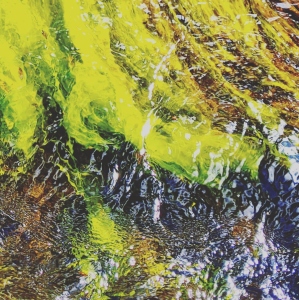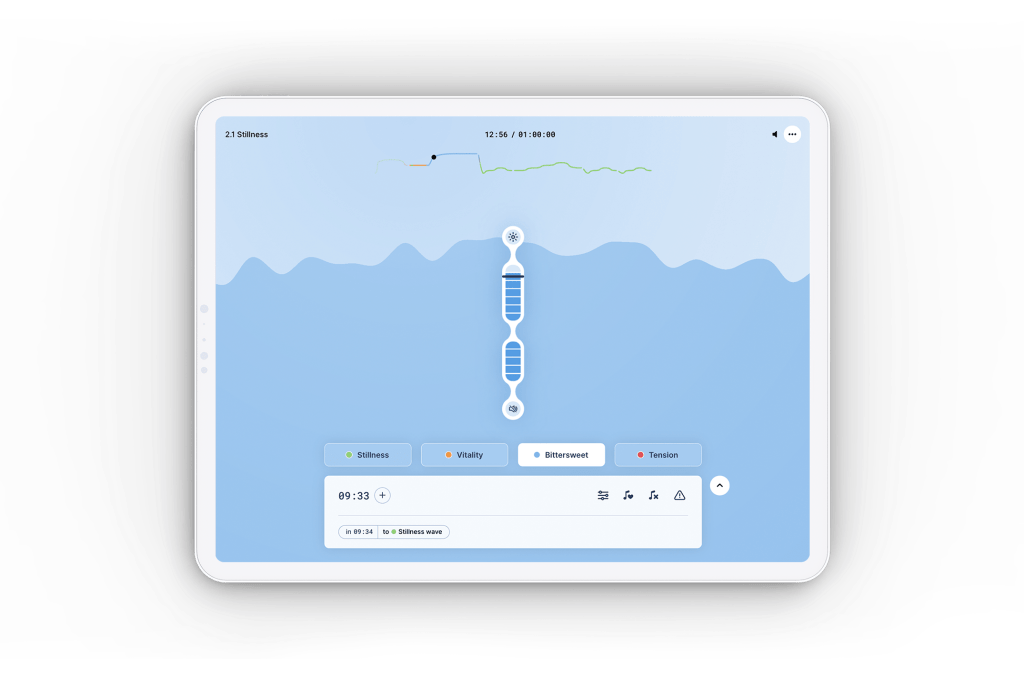
Emyria's Music Programs for MDMA-Assisted Therapy
Your roadmap to working with Wavepaths
1. Introduction to Wavepaths
(live group session)
See recording of the session held on 4 April 2024 here
- Theory: Introduction to the main theoretical underpinnings of Wavepaths.
- Tour: An interactive tour of the platform.
- Music: Brief introduction to the custom made music templates for Emyria.
- Basics: Short explanations on how to run your first sessions and adapt music in real-time.
2. Log in to Wavepaths
- Account: You can access Wavepaths here using your individual Pax Centre email address and Wavepaths1 as your password.
- Password: Proceed to your Profile area to set a personal password.
- Community: Set up your complementary Wavepaths Community account here to stay up to date on our developments and connect with a global network of practitioners.
3. Familiarize yourself
- Organise : Open each template from the list below and Save these template to your “Saved Templates” for easy access from your own account.
- Listen Play music from the Emyria templates and experience how the different waves sound like (see list below).
- Play Try some of the main features you want to use, like skipping to next waves or changing the volume.
- Observe: If possible, observe an experienced colleague working with Wavepaths.
4. Preparing your client session
- Profile: Create a profile for your patient using the “Clients” feature that you can find in the left side bar.
- Select: Decide what music template to select for your client.
- Customise: If required, adapt the template to your client and save this as a new template for this client.
- Test: Ensure all the needed technical equipment is ready and the music plays correctly and at the right volume.
5. Running your client session
- Template: Select the right template for your client from your Saved Templates
- Client: Select the patient you play this music for on the right side.
- Session-Type: Select “Real Time Buffered” for stable internet connection
- Start Session (1/2): Click Start Session. The session will start in “Prelude”.
- Start Session (2/2): In the new window, click start session once the client takes the Medicine (This will synchronise the music with their experience).
6. Ongoing
- Q&A: join drop in sessions with Wavepaths for open Q&A and feedback.
- Deepen: Deepen your knowledghe and skills on how to customise music based on integration information and client feedback.

Emyria's Musical Templates
Wavepaths and the team at Emyria have curated a bespoke series of musical experiences for MDMA-assisted therapy, developed with care and understanding for the needs of your patients. This series is designed to be used in sequence but all templates can be selected ad hoc and can be customised to meet individual needs.
Emyria 1A
view template here.
view extended version (8 hours) here.
This template uses our public template “3.5 Journey” as it is, without any modifications.
The listener is guided through a diverse tapestry of subjective experiences and therapeutic functions. Infused with emotionally resonant bridges and interwoven with dynamically deepening crescendos, percussive interludes, and soothing passages, this template creates an ebb and flow that invites a deepening and release of emotionality.
The initial pre-onset phase offers a cocoon of deep relaxation at the start of the session, gradually transitioning into a slower, more spacious rhythm that gently evolves into a melody-driven pulse as the journey progresses through the onset and ascent to the peak. within the peak phase, you will find one deepening bittersweet wave, accompanied by one deepening wave of stillness and another of vitality.
The template is standardised to include a number of silences that can be used as pitstops/check-ins. These can be removed or customised as you wish.
Emyria 1B
view template here
view extended version (8 hours) here.
This template is an adaptation from “Emyria 1A”, comparably making the overall session a little less emotionally evocative at first, yet still containing a number of strong musical periods.
Key differences to Emyria 1A:
- Removal of the deepen Bittersweet wave present at the peak in Emyria 1A that features highly evocative orchestral and soprano elements, this wave is now reserved for Emyria 2 and 3.
- String orchestra, female choir vocals and brass, by Robert Thomas and NYX
- Addition of two different deepen Bittersweet waves during peak (Emyria 1A / has one)
- Electronic drones with remixed female vocals, by Abdul Mogard
- String orchestra, tuned percussion and drums, by Greg Haines
- Addition of one different deepen Stillness wave during the return
- Electronic drones, by Abdul Mogard
Emyria 2A
view template here.
view extended version (8 hours) here.
Compared to Emyria 1A and 1B, this template is designed to be overall more emotionally intense, with more emotional peaks (deepen waves), including sections that contain strong percussion. Also, in contrast to Emyria 1, this template contains the emotionality “Tension”, expressed in the functions Deepening, Soothing and Bridging.
The template is characterised by a larger number of deepening waves of various emotionalities, each building to a crescendo. These are consciously interwoven with percussive interludes and soothing passages where the music is less emotionally demanding and allows “rest” and reflection.
Key differences to Emyria 1A and 1B:
- Addition of bridges and deepen waves that are not present in 1B, thereby containing more musical novelty.
The template does not include preprogrammed periods of silences. These can be added as you wish.
Emyria 2B
view template here.
view extended version (8 hours) here.
Compared to Emyria 2A, this template is designed to be slightly more driving, by the presence of more percussive deepen waves.
Key differences to Emyria 2A:
- Addition of one percussive Stillness wave, near the end of the peak phase
- Tribal Percussion (mixed with Stillness music), by Robert Thomas
- Addition of one percussive Bittersweet wave during the return phase
- Acoustic Drums (mixed with Bittersweet music), by Andrea Belfi
The template does not include preprogrammed periods of silences. These can be added as you wish.
Emyria 3
view template here.
This template is created with a combination of Wavepaths music and licensed songs. These licensed songs are selected from previously curated playlists by Mendel that one can find publicly on Spotify.
This template is created to ensure sufficient musical diversity for a third MDMA session. It does contain a small selection of Wavepaths music from previous template, creating a sense of continuity and familiarity, yet the majority of music will be new for this template.
Compared to Emyria 2 and 3, this template contains diverse musical genres, including sections with male and female vocals.